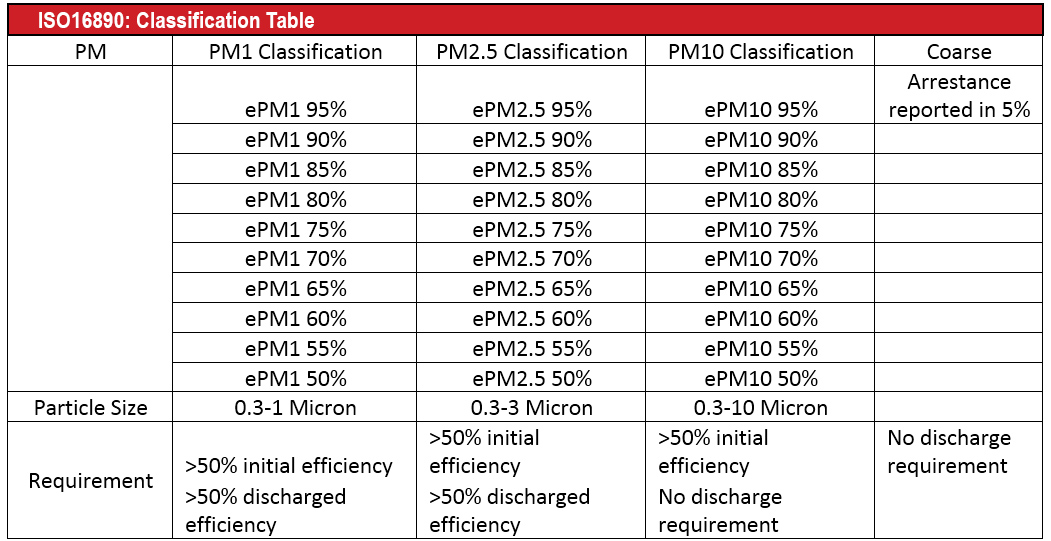The ISO 16890 is the latest standard for air filter testing and classification with a global coverage and outlook. The new standard was introduced on January 2017 and actively replaced EN 779 in 2018. It brings in a significant harmonization between the two tests standards of ASHRAE 52.2 (USA) and EN 779 (Europe). The advantage of ISO 16890 is that filter efficiency is determined realistically using the four dust categories PM1, PM2.5, PM10 and ISO coarse dust. The ISO 16890 standard uses the same evaluation parameters as the World Health Organization (WHO) and other environmental authorities. This makes the selection of the best possible filters for individual requirements much easier.
What does PM1 mean?
PM stands for Atmospheric Particulate Matter; the number 1 signifies that the particle range is for one micron diameter particles and smaller. In terms of quantity this is by far the largest particle range within the atmosphere. PM2.5 is the range that covers particles with a diameter of 2.5 Microns and less and finally PM10 particles 10 microns and below.
In summary: –
There will be four specific grades of air filter: –
- PM1, PM2.5, PM10, PM Coarse
Major Benefits of ISO 16890?
The new standard offers several improvements when compared to the previous Standards: –
- It provides an international standard that can be recognized across the globe combining EN & ASHRAE
- The EN779 test qualified fine filter performance at 0.4microns efficiency whereas ISO 16890 records their performance at a particle spectrum of 0.3 to 10 Microns closely related to WHO norms and hence closely related to IAQ norms and human health.
- Filters can be chosen for their specific need closely related to the application.
- The new ISO standard is more realistic to real life performance of a filter.
- It will be easier to compare products from different parts of the world which can drive innovation and customer value.


(All above information & Data are derived from Book records of Filtration Standards & Other related standards, research papers and its related webpages)